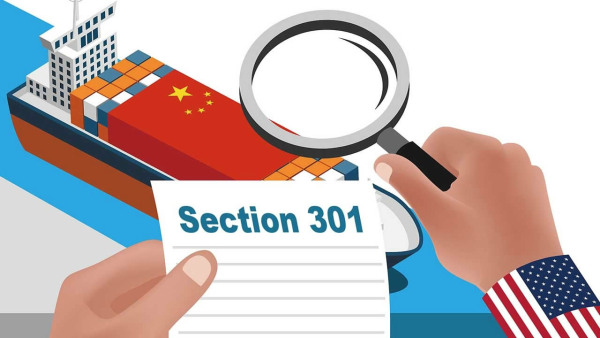The Consumer Product Safety Commission (“CPSC”) has made various revisions to the prohibition of certain phthalates in children’s products. These changes affect children’s toys1 and child care articles2 that are imported on or after April 25, 2018.
Phthalates are chemicals that are added to plastics to soften and increase their flexibility. As a result of the new rule, the CPSC has found the following eight phthalates to be harmful to children. Affected products that contain these phthalates in concentrations above 0.1% cannot be imported on or after April 25, 2018:
• BBP – benzyl butyl phthalate
• DBP – dibutyl phthalate
• DEHP – di-(2-ethylhexyl) phthalate
• DINP – diisononyl phthalate
• DIBP – diisobutyl phthalate
• DPENP – di-n-pentyl phthalate
• DHEXP – di-n-hexyl phthalate
• DCHP – dicyclohexly phthalate
In addition, the CPSC removed the prohibition for di-n-octyl (DNOP) and diisodecyl (DIDP) as they were found not to cause adverse effects.
In a separate notice, the CPSC has also determined that the following specified plastics and accompanying additives do not exceed the phthalates content limits. Therefore, third party testing of these plastics will no longer be required:
(1) Polypropylene (PP)3
(2) Polyethylene (PE)4
(3) General purpose polystyrene (GPPS), medium-impact polystyrene (MIPS), high-impact polystyrene (HIPS), and super high-impact polystyrene (SHIPS)5
(4) Acrylonitrile butadiene styrene (ABS)6
The new rule only impacts third party testing requirements (i.e., that these plastics materials no longer need to be tested by a CPSC-accredited third party lab). However, children’s toys and child care articles are still required to comply with the phthalate content limits regardless of any relief from 3rd party testing, and a certificate must be issued stating that the product complies with CPSC requirements.
This rule originally took effect on September 29, 2017 (prior to the recent changes to the list of banned phthalates) and currently applies to the six originally listed phthalates (BBP, DBP, DEHP, DIDP, DINP and DnOP). Effective April 25, 2018, this rule will apply to the revised list of eight phthalates, noted above.
Please feel free to contact David J. Evan or Jamie L. Maguire with any questions regarding these new requirements or your compliance obligations.
___________________________
1.A “children’s toy” is a “consumer product designed or intended by the manufacturer for a child 12 years of age or younger for use by the child when the child plays.”
2.“Child care articles” are those which are designed or intended by the manufacturer for a child age three years old or younger to facilitate sleeping or feeding or to help the child in sucking or teething (for example, children’s sleepwear, infant and toddler bottles, sippy cups, utensils, bibs, pacifiers, and teethers).
3.With any of the following additives: (i) The plasticizers polybutenes, dioctyl sebacate, isooctyl tallate, paraffinic, naphthenic, and mineral plasticizing oils, and polyol; (ii) Unrecovered catalysts; (iii) Fillers; (iv) Primary and secondary antioxidants; (v) Neutralizing agents; (vi) Antistatic agents; (vii) Slip agents; (viii) Metal deactivators; (ix) Quenchers; (x) UV stabilizers; (xi) Nucleating agents; (xii) Flame retardants; (xiii) Blowing or foaming agents; (xiv) Antiblocking agents; (xv) Lubricants; or (xvi) Colorants.
4.With any of the following additives: (i) The plasticizers glyceryl tribenzoate, polyethylene glycol, sunflower oil, paraffin wax, paraffin oil, mineral oil, glycerin, EPDM rubber, and EVA polymer; (ii) Initiators; (iii) Promoters; (iv) Unrecovered catalysts; (v) Fillers; (vi) Antistatic agents; (vii) Flame retardants; (viii) Anti-blocking agents; (ix) Slip agents; (x) Blowing agents; (xi) Cross-linking agents; (xii) Antioxidants; (xiii) Carbon black; or (xiv) Colorants.
5.With any of the following additives: (i) Unrecovered catalysts; (ii) Internal lubricants; (iii) Chain transfer/transition agents; (iv) Stabilizers; (v) Diluents; (vi) Colorants; (vii) Aluminum chloride, ethyl chloride, hydrochloric acid; (viii) Iron oxide, potassium oxide, chromium oxide; or (ix) Bifunctional peroxides.
6.With any of the following additives: (i) The plasticizers hydrocarbon processing oil, triphenyl phosphate, resorcinol bis(diphenyl phosphate), oligomeric phosphate, long chain fatty acid esters and aromatic sulfonamide; (ii) Stabilizers; (iii) Lubricants; (iv) Antioxidants; (v) Molecular weight regulators; (vi) Initiators/unrecovered catalysts, (vii) Activators; (viii) Emulsifiers; or (ix) Colorants.




